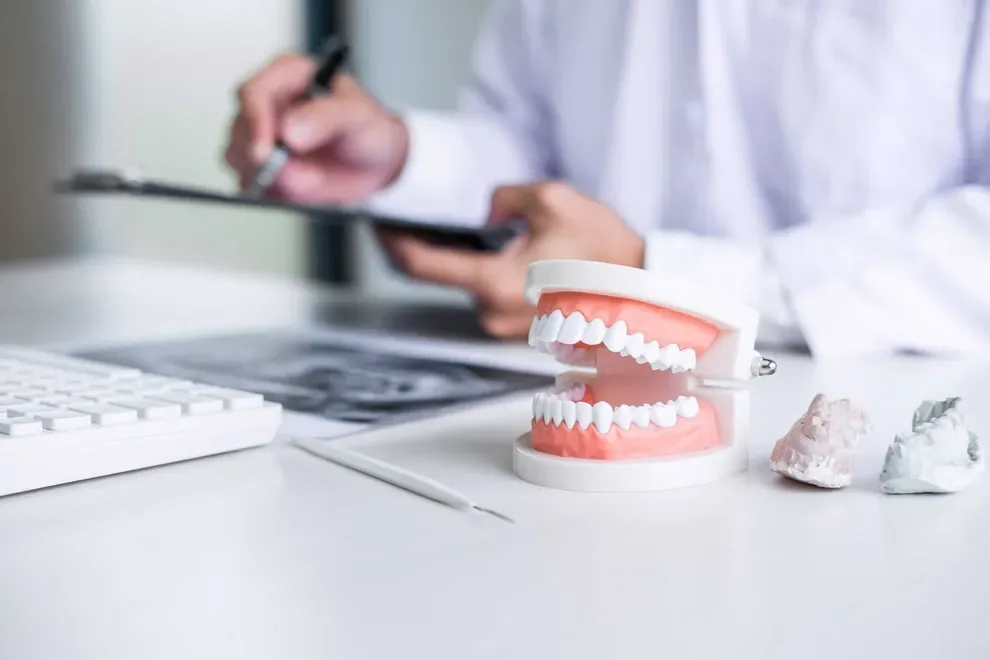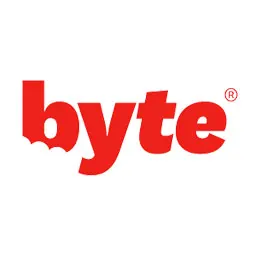Teledentistry: Top Providers, Legality & Availability

Table of Contents
- Is Teledentistry Legal?
- Providers
- What Is Teledentistry
- How It Works
- Teledentistry Moving Forward
Telehealth has been evolving for decades, but many medical providers, including dentists, expanded their offerings due to the COVID-19 pandemic. Teledentistry can improve access to care and treatment for people who have limited time, money, or access to a range of dental treatment otherwise.
Providers of teledentistry include Toothpic, United Healthcare Dental, and the network of doctors who work with Byte. Laws about teledentistry vary by state, but services are available in most states.
Is Teledentistry Legal?
Although teledentistry may be a fantastic option moving forward, able to reduce costs and improve treatment access and adherence, it is not a full replacement for dental treatment, including regular cleanings and in-person exams, which include x-rays.
However, teledentistry can be a good option for diagnosing potential oral health problems, with associated referrals. It can also be a good choice for supporting some noninvasive types of treatment like orthodontics.
As the COVID-19 pandemic began in March 2020, more dental insurance companies began reimbursing for teledentistry services because people were hesitant to go to a dentist in person. Today, some dental services are still available via teledentistry.
Prior to 2020, dental insurance companies rarely reimbursed for teledentistry, as it had not been considered as effective as in-person visits.
While teledentistry is an increasingly appealing and important option for most people in the United States, laws around the practice are very new and tend to be different by state. One of the more recent and comprehensive state laws was passed in California in 2019, which added these specific requirements:
The treating dentist’s name, license number, and dental board information must be provided to the patient.
The patient must provide their most recent x-rays prior to orthodontic treatment, including for treatment with clear, plastic aligners.
The patient must undergo a full dental examination with a complete medical and dental history.
The teledentist or company must provide recourse information to the patient if their treatment falls below the standard of care.
The American Dental Association (ADA) released original guidelines regarding teledentistry stating that the organization expected telehealth services to be provided at the same quality and consistency as in-person services based on the level of information available. This means, in practical terms, that some diagnostic and treatment potential is limited. However, the ability of dentists to recommend courses of treatment, prescribe medications like antibiotics, and even offer support for orthodontic treatment has greatly improved the lives of thousands of people around the country.
Big Names in Teledentistry
If you need a consultation with a dentist, or you’re interested in a home-based dental product like plastic aligners, you may look at potential options through your dental insurance provider. You may also consider these online teledentistry services if they are available in your state:
This service uses your mobile phone to connect you to a dentist for a quick consultation.
ToothPic takes an overview of your medical and dental history as you sign in. Then, they ask you to take up to six pictures of your mouth for a report and consultation. This can include an overview of recommended standard treatments, guidance on orthodontics, and even diagnosis or recommendations to get a diagnosis.
The insurance provider United Healthcare Dental began offering a teledentistry option during the COVID-19 pandemic, which included financial support for their customers. With millions of customers around the country, United Healthcare Dental helped expand access to basic diagnostics, consultations, and recommendations, so patients did not have to travel to a dentist unless necessary.
At-home, over-the-counter orthodontics treatments using plastic aligners have been a booming business for years. Increasingly, companies like Byte are providing easier access to orthodontic treatment. Although clear, plastic aligners are not for everyone, many people benefit from the simplicity of having aligners delivered to them, with supervision and care from a licensed orthodontist.
Teledentistry has revolutionized basic care for dentistry, including the diagnosis of potential cavities or tooth decay, recommendations for cleaning schedule, orthodontics, and much more.
There are potentially many other teledentistry options in your area, as access can vary based on your insurance and the state you live in.
What Is Teledentistry?
Teledentistry is a branch of telemedicine that uses photographs, interactive audio, video calls or recordings, data communications, and other electronic information to provide support, consultation, some diagnoses, and some treatment over mobile and internet technologies. Essentially, you can use your smartphone, tablet, or laptop to communicate with a professional, trained dentist for help regarding dental issues that come up.
There are many potential benefits to teledentistry, including less expensive treatment, greater access to high-quality care for patients in remote areas, and easier management of patient load for medical professionals. Telehealth practices have become especially important during the COVID-19 pandemic, but there are great benefits to access to this care that will continue as the pandemic recedes.
It is important to know that teledentistry may be only a first step to getting in-person treatment. A teledentist may be able to diagnose a potential oral health issue, but you may need to get treatment in person.
How Does Teledentistry Work?
It is vital to get regular dental care and access to a dentist when you are concerned about your oral health. And for many Americans, teledentistry can be a more affordable option.
Patient safety and privacy are still important for both health care professionals and patients. Fortunately, with advances in laws, diagnostic tools, internet speed and access, and even camera quality, the ability of medical professionals like dentists to help patients who may be miles away from them is increasing.
By 2013, as many as 52 percent of hospitals in the United States utilized telehealth. Another 10 percent were beginning to implement telehealth services.
At-home treatments (including orthodontics like clear, plastic aligners) use telehealth services specific to teledentistry.
Studies on telehealth show that about 70 percent of people who use these services are comfortable communicating with medical professionals like dentists over text, email, or video rather than seeing a professional in person. Potential reasons for this include the following:
Less expensive “visits”
Faster access to medical opinions
Access to higher quality care
Treatment or diagnosis without traveling a long distance
Comfort with methods of communication, including indirect communication like text
About 20 percent of Americans live in rural areas without easy access to a wide range of medical and dental professionals. But even for Americans living in major cities, scheduling an appointment can be complicated and finding a good appointment time can be even harder.
Teledentistry can make dental care and support simpler, which can encourage regular treatment for many people who might otherwise avoid important regular checkups.
Research on telehealth options in general suggests that the quality of care and patient success rates were the same for telehealth providers compared to in-person visits.
Teledentistry Moving Forward
The rise of teledentistry may have started as a response to the pandemic, but it’s clearly a trend that’s here to stay. A 2022 study reported that 93% of dentists expect teledentistry to have a major impact on how they practice.
While it’s impossible to know how teledentistry will evolve in our fast-changing world, there are some aspects of teledentistry that could have a huge impact on individual and public oral health.
Opportunities to Improve the Oral Health of At-Risk & Underserved Populations
Inequality in oral health has long been a concern in the dental community. Individuals with limited access to the tools needed to achieve and maintain dental health (including those who are economically challenged, live dependently in a community setting, and have physical or mental limitations) suffer from oral health problems at much higher rates than those who have resources easily available to them. At-risk populations include children, disabled individuals, those in poverty, and the elderly.
Teledentistry could help to address these issues and offer public dental health to communities in need. Because dentists working remotely can be anywhere, there is more opportunity for dentists to provide their services to those in need using virtual screening and consultations.
High-risk communities can be screened virtually. Treatment plans can be made to minimize the need for in-office visits.
When providing care for a group of children in an area with little access to dental care, for example, a virtual screening may reveal that preventative care (such as an easy-to-apply sealant) is all that Is needed for the majority. A smaller percentage may need a problem addressed, such as a cavity filling.
A dental team can then come in for treatment. A dental hygienist can easily apply the preventative sealant to the majority, as the dentist comes in with portable equipment to care for those with more serious problems. This allows for more children to be treated more efficiently.
By increasing the efficiency and accessibility to dental care, teledentistry could help reduce the many barriers to oral health.
Bridging the Gap Between Dentists & Medical Doctors
Oral health is directly linked to overall health, and no one knows this better than dentists, as they see patients with oral health problems that are connected to chronic health issues like inflammation, diabetes, and migraines. Teledentistry and telehealth could make it easier for dentists and doctors to collaborate and discuss a patient’s connected symptoms and problems.
This could also be helpful for doctors and dentists when treating a patient who is taking a lot of medications. By discussing their plans for prescriptions, the doctors can ensure their patient won’t be overmedicated or prescribed conflicting medications. They can also work together to minimize the side effects of their combined medications and gain insight into any conditions the medication is causing.
For example, many elderly individuals may experience a dry mouth as a result of their medications. If an elderly patient’s doctor is in communication with their dentist, the dentist won’t assume the dry mouth is being caused by an oral health problem. Instead, they can work together to minimize the side effects.
Patient-Directed Care
Many individuals dread dentist appointments. In addition to the discomfort of visits, there are other inconvenient factors to consider, such as missing work, driving to appointments, and sitting around the waiting room — all for a routine checkup.
Teledentistry could make this process a lot easier. Virtual exams mean more efficient care, and the elimination of many other stress factors.
Teledentistry offers individuals the chance to take control of their smile and dental health. Consider today’s options for teeth-straightening, for example. For a long time, the only well-known way to get straighter teeth was braces. This meant many visits to the orthodontist, non-removable hardware that was usually visible and sometimes uncomfortable, and possibly years of treatment.
Today, clear aligner kits allow someone to order an at-home impression kit, receive a complete kit of clear teeth aligners, check in virtually with a clinical team and orthodontist, and get an optimal smile in as little as four months — without ever going into an orthodontist’s office.
Cutting-edge tooth scanning tools and interactive apps could make teledentistry even more exciting and accessible to those seeking an independent and modern approach to dental care.
